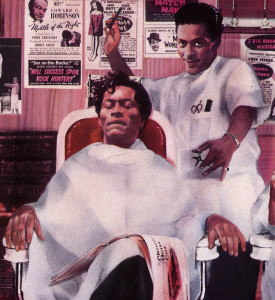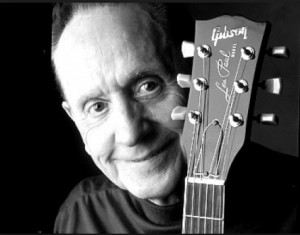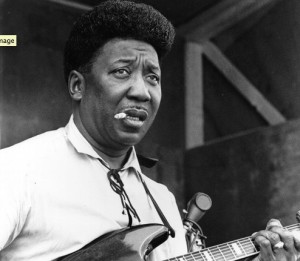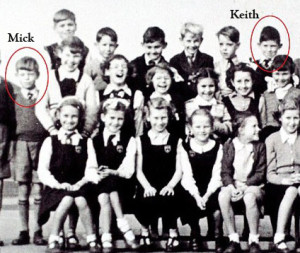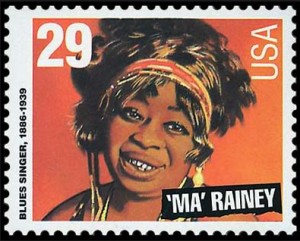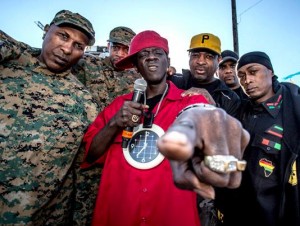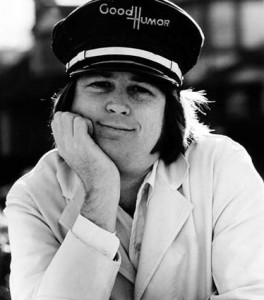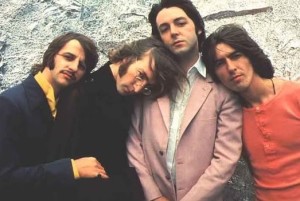Here’s my favorite Frank moment, from the 1957 film “Pal Joey.” I know it’s staged, but I love it. He serenades society girl Mrs. Simpson (the stunning Rita Hayworth, looking gorgeous in her apricot gown) with a Rodgers and Hart song that pokes fun at snobs and phonies. Frank delivers these delicious lyrics with just the right amount of mockery and flirtation. There may have been singers with finer vocal chops, but nobody had Frank’s style. RIP, Pally.
© Dana Spiardi, Dec 12, 2015
]]>I am thankful…
That Woody Guthrie crusaded for the common people, inspiring hope and self-respect through his words, wit and wisdom.
That blues great Robert Johnson went down to The Crossroads.
That record producer and civil rights activist John Hammond chucked his aristocratic roots, devoted his life to the racial integration of music, and introduced the white world to delta blues.
That Chuck Berry dropped out of the Poro College of Cosmetology and decided not to become a beautician.
That Leiber met Stoller, that King met Goffin, that Dozier met the Hollands, that Mann met Weil, that Elton met Taupin, that Pomus met Shuman, that Fagan met Becker, that Page met Plant, that Strummer met Jones, that Korner met Davies, that Bowie met Ronson, that Springsteen met Van Zandt, that Greenwich met Barry.
That Radio Luxembourg gave 1950s’ British teenagers their first taste of American rock-n-roll.
That Jim Marshall blew our minds with his mighty amps.
That Les Paul invented the solid body electric guitar.
That Bobby Dylan endured the slings and arrows of the folkies to “go electric.”
That ethnomusicologists John and Alan Lomax devoted their lives to researching, collecting and promoting American folk music.
That Elvis stopped driving that truck, ditched his plans to become an electrician, and ignored everyone who told him NOT to record “Heartbreak Hotel.”
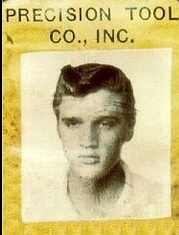
That a 15-year-old Paul McCartney had the balls to audition for a skeptical John Lennon by playing “Twenty Flight Rock” after a church festival in Liverpool on July 6, 1957.
That Phil Spector proved Marcel Proust was right: “Everything great in the world is done by neurotics.”
That close-minded, racist, misogynistic, homophobic, rush-to-war leaders served but one purpose in their narrow lives: to give musicians and artists something to rebel against.
That Muddy Waters nailed it: “The blues had a baby, and they named it rock and roll.”
That cool cats like Gram Parsons had the guts to champion country music in a psychedelic era.
That James Brown taught us to dance….and told his people to say it loud: be black and proud!
That Mick Jagger and Keith Richards just happened to be standing on the same train station platform in October 1961 (Mick carrying R&B albums and Keith toting his guitar), remembered each other from grade school, and realized they had a common obsession.
That David Bowie painted his face, donned an androgynous look, and pushed the boundaries of sexual identity.
That Ma Rainey, Bessie Smith, Big Mama Thornton, Billie Holiday, Etta James, and Sister Rosetta Tharpe proved they could out-wail their blues brothers.
That Jimi Hendrix went to London, and came back to America a star.
That Bruce inspired us to ride out into the night to case the promised land.
That fab ’60s dames like Laura Nyro, Janis Joplin, Tina Turner, Dusty Springfield, Marianne Faithfull, Darlene Love, Mama Cass, and Grace Slick had the balls to throw stones at the glass ceiling of rock and roll.
That punk rockers came along just in time to deconstruct a bloated music world, and make rock fun and frivolous again.
That Johnny Cash turned his angst into art.
That Lou Reed took a walk on the wild side, and embodied the beautiful urban grit of New York City.
That rap and hip-hop artists like Public Enemy, Grandmaster Flash, and Rage Against The Machine inspired us fight the powers that be.
That Max Yasgur let 400,000 hippies camp out on his 600-acre dairy farm in the Catskills for a three-day music festival called Woodstock.
That psych meds and massive amounts of therapy were available to Beach Boy Brian Wilson, who created some other world’s most beautiful music despite a lifelong battle with mental illness.
That the great record producers, managers, recording engineers, and label execs — Ahmet Ertegün, the Chess brothers, Sam Phillips, George Martin, Lou Adler, Clive Davis, Mo Ostin, Jerry Wexler, Jon Landau, Brian Epstein, Berry Gordy, Tom Dowd, Joe Meek, Tom Wilson, Jimmy Miller and David Geffen — knew a good thing when they heard it.
That Sly Stone made us funky.
That Bob Marley turned us on to reggae and the Rastafarian way of life.
That Mary Quant and Vivienne Westwood helped us strut to the beat in style with their fab fashions.
That The Beatles broke up at just the right time – on top and forever unequaled – leaving us all with bittersweet thoughts of what might have been.
That my parents, Fred and Helen Spiardi, encouraged my love of music, let me build a record collection to my heart’s delight, and never criticized my tastes.
Happy Thanksgiving to all who follow my blog! Peace and love, brothers and sisters.
By Dana Spiardi, Nov 27, 2014
The image of Chuck Berry as a barber is by the late Guy Peellaert, from the book “Rock Dreams.”
]]>
I’ll always love this ornery old genius. I had only one chance to see him live, performing a short outdoor set during the Three Rivers Arts Festival in 1983. Sure, his guitar sound and style formed the foundation for rock and roll, but he also wrote some of the best lyrics in the history of modern music. Oh hell, where do I start? Here’s a favorite that springs to mind, from the song “Nadine:”
I saw her from the corner when she turned and doubled back
And started walkin’ toward a coffee-colored Cadillac.
I was pushing through the crowd to get to where she’s at
And I was campaign-shouting like a southern diplomat.
Everybody steals from him. There are lots of examples, some quite minor, like Queen inserting Chuck’s line go, go, go, Little Queenie to close their song “Now I’m Here.” And Marc Bolan ending his hit “Bang A Gong” with meanwhile, I’m still thinking, also from Berry’s “Little Queenie.”
The ’70s rock group Jo Jo Gunne named themselves for a Chuck song with that title.
Bruce Springsteen transformed Chuck’s “Bye, Bye Johnny” into “Johnny Bye Bye.”
And both Bruce and John Lennon grabbed lines from “You Can’t Catch Me.” Bruce rearranged the lyrics New Jersey Turnpike in the wee, wee hours when he wrote “Open All Night” for his “Nebraska” LP. But John went much further. He actually based the Beatles’ “Come Together on Chuck’s song. He turned Berry’s line Here come a flat-top, he was movin’ up with me into Here come old flat-top, he come groovin’ up slowly. Throughout the song John does his best to match the rocking-rap style and rhythm that Chuck was famous for. He was, after all, one of Berry’s biggest fans. John once said, “If you tried to give rock and roll another name, you might call it ‘Chuck Berry.'”
It was Paul McCartney who suggested John slow down the tempo of “Come Together” and add a heavy bass line to give it a more bluesy feel. Though most Beatle fans undoubtedly missed the musical and lyrical similarities to “You Can’t Catch Me,” music publisher Maurice Levy did not. Levy owned the rights to Chuck’s material and sued the Beatle. To settle the case, John agreed to record three other songs owned by Levy’s publishing company. Two of these – “Ya Ya” and “You Can’t Catch Me” were included on John’s 1975 “Rock-n-Roll” LP. A third – “Angel Baby” – was released after his death.
Was Chuck flattered by all these references to his music? I seriously doubt it. Chuck didn’t need validation from anyone. In fact, he probably would have punched out a few lights if he’d had the chance. After all, he once slugged Keith Richards in the face simply for tapping him on the shoulder to say hello. Ornery. Genius.
Here’s a great clip of Chuck performing “You Can’t Catch Me.” Just for the record, I’d like to note that his longtime pianist and collaborator Johnnie Johnson claimed to have co-written many of Chuck’s hits, like “Sweet Little Sixteen” and “Roll Over Beethoven.” In 2000 he sued Berry, seeking royalty payments. But the case was dismissed because too much time had elapsed from the date the songs were written.
© Dana Spiardi, Oct 18, 2015
]]>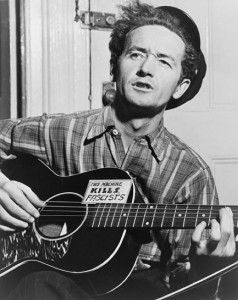 In 1945 Woody Guthrie married his second wife, Marjorie Greenblatt Mazia, who had been a dancer with the Martha Graham Dance Company in New York. The two met when a choreographer from the troupe developed a dance based on one of Woody’s many whimsical protest songs. Marjorie’s mother just happened to be Aliza Greenblatt, a well-known Yiddish poet. She lived across the street from Woody and Marjorie on Mermaid Avenue in Brooklyn’s Coney Island. Woody and his mother-in-law, known to all as Bubbie, enjoyed a close, collaborative relationship. They shared similar interests – anti-fascism, pro-labor activism, folk lore – and a desire to promote social justice through music and art. Aliza played a large role in the Guthrie household, babysitting the kids and serving Friday night Sabbath dinners. She inspired Woody’s deep appreciation for Jewish history and culture. He likened the struggles of the Jews to those of his fellow Okies and other oppressed people.
In 1945 Woody Guthrie married his second wife, Marjorie Greenblatt Mazia, who had been a dancer with the Martha Graham Dance Company in New York. The two met when a choreographer from the troupe developed a dance based on one of Woody’s many whimsical protest songs. Marjorie’s mother just happened to be Aliza Greenblatt, a well-known Yiddish poet. She lived across the street from Woody and Marjorie on Mermaid Avenue in Brooklyn’s Coney Island. Woody and his mother-in-law, known to all as Bubbie, enjoyed a close, collaborative relationship. They shared similar interests – anti-fascism, pro-labor activism, folk lore – and a desire to promote social justice through music and art. Aliza played a large role in the Guthrie household, babysitting the kids and serving Friday night Sabbath dinners. She inspired Woody’s deep appreciation for Jewish history and culture. He likened the struggles of the Jews to those of his fellow Okies and other oppressed people.
More than thirty years after Woody’s death, his daughter Nora began to dig through The Woody Guthrie Archives, resurrecting the Jewish-themed lyrical poems he had written in 1940s and 50s. These include poems such as “Honeyky Hanukah Time,” written in typically playful Woody style:
It’s Honeyky Hanukah, shaky my hand,
My candles are burning all over this land,
To light the dark road for the man passing by,
It’s Honeyky Hanukah time.
It’s Honeyky Hanukah, kissy my cheek,
The light in my window it burns for a week,
I’ll open my present and take a little peek,
It’s Honeyky Hanukah time.
Nora decided to have Woody’s words set to music, and asked The Klezmatics, an eclectic klezmer band, to carry out the project. The resulting songs were the highlight of a 2003 concert, ”Holy Ground: The Jewish Songs of Woody Guthrie,” staged on the first night of Hanukkah at the legendary 92nd Street Y in New York. In 2010, The Klezmatics released the songs on their album “Wonder Wheel,” which the Grammy Award for Best Contemporary World Music Album at the 49th Grammy awards.
 Nora wants to make sure that these songs cast her father in a much broader light. She once told an interviewer, “He was a poet and lyricist who wrote about everything. I don’t want to see him turned into a freeze-dried, Dust Bowl icon representing a narrow version of what somebody thinks he was. These songs are just one more facet of his work that will add to a fuller picture of him as a songwriter.”
Nora wants to make sure that these songs cast her father in a much broader light. She once told an interviewer, “He was a poet and lyricist who wrote about everything. I don’t want to see him turned into a freeze-dried, Dust Bowl icon representing a narrow version of what somebody thinks he was. These songs are just one more facet of his work that will add to a fuller picture of him as a songwriter.”
If I had it my way, every grade school child in America would be required to spend an entire week immersed in the life and times of Woodrow Wilson Guthrie. He was one of America’s purest souls and most accomplished folk heroes — an artist, activist, diarist, humorist, humanitarian, and rabble-rouser. If you’re a lover of music, if you believe that music has the power to incite, to inspire, and to change the world, please remember Woody today on his 103rd birthday.
Here are some delightful lyrics from another of Woody’s Jewish-themed poems, “Mermaid Avenue:”
Mermaid Avenue that’s the street
Where the lox and bagles meet,
Where the hot dog meets the mustard
Where the sour meets the sweet;
Where the beer flows to the ocean
(Where the halvah meets the pickle)
Where the wine runs to the sea;
Why they call it Mermaid Avenue
That’s more than I can see.
Please watch this beautiful video of my favorite Woody song, “So Long, It’s Been To Know You,” from the Library of Congress recording:
© Dana Spiardi, July 14, 2015
]]>
Lots of Diddley-based tunes are obvious, like “Willy and the Hand Jive” and Bo’s own “Who Do You Love?” But you may not realize just how many songs have been fueled by that distinctive beat. No rocker can resist it! Here’s a collection of my favorite Bo Babies. Turn your speakers up loud and go crazy, man, crazy!
Here’s the original, from the master himself, born Ellas Otha Bates on December 30, 1928. He entered rock heaven on June 2, 2008. Hundreds paid tribute to him upon his passing: from the U.S. President and House of Representative members, to countless rock and R&B giants. The University of Florida posthumously awarded Bo a Doctor of Fine Arts degree, and a Voice of America radio service declared that “his influence was so widespread that it is hard to imagine what rock and roll would have sounded like without him.”
Buddy Holly wrote and recorded “Not Fade Away,” but there’s absolutely no doubt that The Stones produced the definitive version. Here’s young Mick, shakin’ his money-maker on The Mike Douglas show in 1964. And the late, great Brian Jones plays a mean blues harp.
Here’s my favorite Who song, “Magic Bus.” Betcha didn’t realize this was born of Bo!
Check out this great clip of Bruce honoring Bo with his Diddley-inspired “She’s the One.
Even punk rockers loved Bo. Here’s The Clash, performing one of my favorites, “Rudie Can’t Fail.” For the record, the word “rudie” comes from Jamaican street culture, and quite literally refers to rude (bad) boys. Brit punks of the 1970s quickly co-opted the name!
The Irish know a good beat when they hear one. “Mystic Eyes,” by Northern Ireland’s Them, is a raucous Diddley-based R&B number. Van Morrison wrote it, and belts it out here in this 1965 performance. Have you ever seen Van this young?
From Belfast to Dublin, here’s U2 with “Desire.” You can count on Bono for descriptive lyrics: She’s the dollars; she’s my protection. Yeah she’s a promise in the year of election. Oh sister, I can’t let you go. Like a preacher stealing hearts at a traveling show.
David Bowie’s “Panic in Detroit” is one of my favorite Diddley-inspired numbers:
Here’s a metal version of Bo’s beat from Guns N’Roses: “Mr. Brownstone.” Slash, you do Bo proud!
Oh, Chrissie…how do I love thee? Let me count the ways. Here’s the queen of the Pretenders with “Break up the Concrete.”
We’ll end with Bo in 1989, making some heavy thunder with his trademark rectangular guitar.
Now, doesn’t this trip down Bo Boulevard just make your ENTIRE day? If these rhythms don’t inspire you to move your feet, shake your hips, bop your head, or – at the very least – tap your fingers, then honey, methinks you’re dead.
© Dana Spiardi, March 2, 2013
]]>

